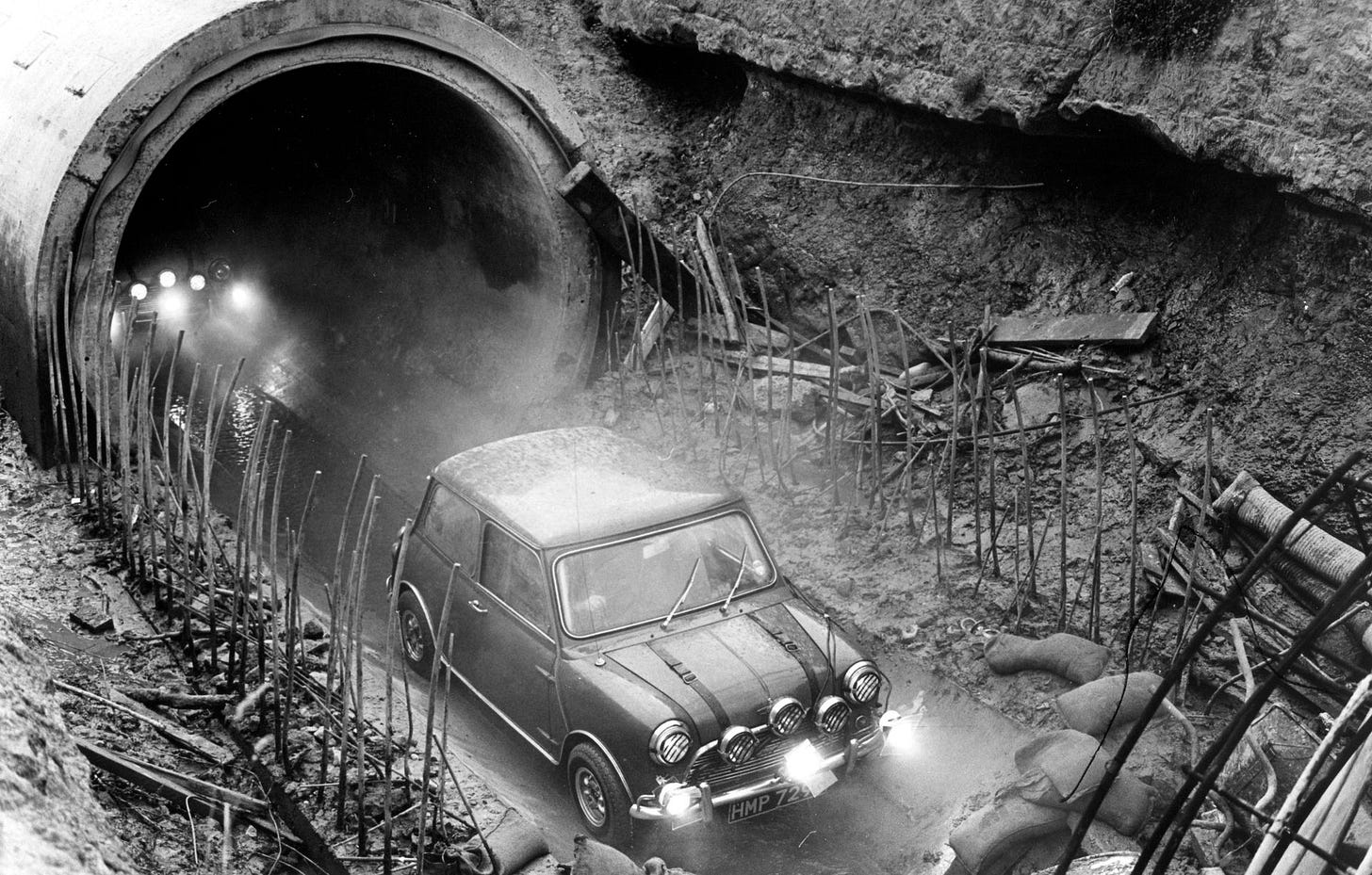Michael Standing (Arthur) and Michael Caine (Charlie) - Charlie Was Only Supposed to Blow the Bloody Doors Off
The Italian Job was released on 5th June 1969. It starred Michael Caine and Noel Coward - in his final film role - alongside a raft of British supporting actors whose faces were ubiquitous in 1960s television. Cameo roles were given to the wonderful John Le Measurier, and to Benny Hill whose smutty kitsch failed on the big-screen.
The other stars of the show were three souped-up Mini Coopers, getaway vehicles in red, white and blue livery. The action shots of their escape from the deliberately grid-locked city portrayed a car chase that was exhilarating in places, but also a little dull and even incongruent; why would professional crooks would go into a large building - the Fiat factory - which could be cordoned off, and the race around its famous roof-top test-track?. Nevertheless, the film created an iconic image for the Mini brand.
The Warwickshire Job - the Famous Sewer Scene - Filmed at Stoke Aldermoor, Coventry - 26th September 1968
For more on this aspect, motoring journalist Mike Brewer provides a comprehensive description of the project’s background, its cast and filming with particular focus on the vehicles.
Over time, The Italian Job became a classic, as British as a Bond movie on Boxing Day. decades later, British Film Industry journalist David Robertson wrote;
“In 1969, England were still football world champions and London was pop-culture’s global nerve centre. If there’s one film that captures that moment of self-confidence it’s this light-hearted caper, in which the English criminal fraternity seeks to whisk millions in gold out of Turin and out of the grasp of their Mafia rivals - a feat to be achieved by red, white and blue-coded Mini Coopers driving rings round their pursuers.
Peter Collinson’s direction and the Rémy Julienne stunt team slot everything together with absolute precision, and Michael Caine is an assured lead. Yet the key to the film’s entertainment value is its refusal to take itself at all seriously, undercutting potential flag-waving with utter camp from Noël Coward’s monarchy-loving criminal mastermind - and a nicely balanced ending”.
In terms of box office gross, the film broke even, and was largely received by the British critics and public with cheerful enthusiasm. It was what it was, a ‘comedy caper’ redolent of Ealing Studios; yet as Brits had not really begun to venture onto the continent for their holidays, its vibrant colour and cosmopolitan locations were a hugely satisfying novelty.
The patriotic incarcerated gangland boss played by Noel Coward was a sideshow that carried both charm and comedic menace - the prison scenes could only have been improved had Ronnie Barker and Fulton Mackay appeared in one of them.
Ultimately, it was the suave charisma of Michael Caine - who history has illustrated, was a huge figure in British cinema - that was the maypole around which danced dervishes. The pace of the film was well managed, its dialogue was authentic enough to represent London villans, yet was sufficiently accessible for American audiences. Regrettably though, they were not enthralled. It was a miss over there.
In a 2004 interview Michael Caine stated that the film’s final scene perfectly set-up the ploy for The Italian Job 2 - the gang escaped from the coach, and it careered down the mountain where the local mafia were waiting to collect the gold, which established the plot-line for a second caper in which Charlie and the gang chased around the Riviera attempting to retrieve their ill-gotten gains. Caine lamented that whilst the original film did not lose money, it did not make that much and so Paramount Studios were reluctant to commit.
“Hang On a Minute Lads, I’ve Got an Idea”
As it was, we had to be content with a hat-tip re-make. The Italian Job of 2003, starring Mark Wahlberg, Donald Sutherland and Jason Statham, was set in Venice not Turin, and then culminated in Los Angeles not the Alps. Instead of a ‘caper’ it was a ‘heist’ movie and had darker themes of violence. I’m not sure Mr. Bridger would have approved.






